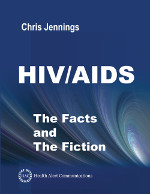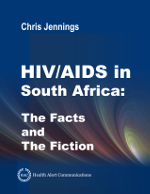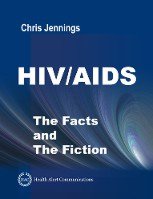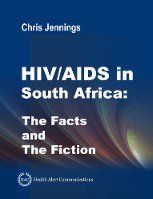 Patient Zero did not introduce HIV into the United States!
Patient Zero did not introduce HIV into the United States!
Not too long ago, this story was a meme cascading through the media. All emanating from a phylogenetic analysis published in Nature, 1970s and ‘Patient 0’ HIV-1 genomes illuminate early HIV/AIDS history in North America [1].
The authors of this phylogenetic analysis (Worobey et al) also concluded that HIV migrated to the USA from Africa via Haiti. However, extensive epidemiological evidence suggests the Africa-Haiti-USA historical narrative is just as incorrect as the narrative regarding Patient Zero.
Stuart Derbyshire and I wrote a Letter to the Editors of Nature in response to conclusions of Worobey et al. At the kind invitation of the Editors, our response is posted on the Nature website. (Update: Our comment is now available only to paid subscribers of Nature). Given the allowance of 300 words and 3 references, the response cites a limited portion of available epidemiological data refuting this concept. Alternately, the response containing the full complement of 13 references is posted below.
Note: The blog post Response to Gong et al offers a far more detailed exposition of epidemiological evidence. It contains the contents of the Nature response plus additional information about the epidemiological winds that blew HIV from the United States towards the Caribbean (excluding Cuba from which American travelers and tourists were embargoed).
__________________________________________________________
Response to Worobey et al – 1970s and ‘Patient 0’ HIV-1 genomes
illuminate early HIV/AIDS history in North America
with full complement of 13 references
Worobey and colleagues describe the genetic diversity of HIV infection in the USA and use the increasing diversity to pinpoint the spread of AIDS from New York to the greater United States [1]. Importantly, they comprehensively reject “Patient Zero” as the founding infective patient and thus correct the mistaken historical record following Shilts [2]. Nevertheless, Worobey maintains that HIV entered the USA via Haiti, where it arrived from Africa.
There is good reason to believe the Africa-Haiti-USA historical narrative is as incorrect as the narrative around patient zero. The evidence suggests that HIV might have spread from the USA to the rest of the world [3]. For example, 10-24% of the first AIDS patients in Haiti had visited the USA or Europe, but none had visited Africa [4, 5]. Of those that had never left Haiti, many were infected by tourists from the USA and Europe [6]. Worobey et al. argue that patient H6 first brought HIV to the USA in 1981, but that misses the possibility that HIV had already arrived in Haiti from the USA [7].
Throughout the world, early in the epidemic, the greatest risk factor for contracting AIDS was sexual contact with a gay man from the United States. This finding was consistent among incipient AIDS populations throughout Denmark [8], United Kingdom [9], France [10], West Germany [11], and South Africa [12] as well as in the Caribbean [13]. A substantial portion of the first AIDS patients in all these locations were gay men who had homosexual contact with a man from the United States; such homosexual contact occurring either inside or outside the United States.
In sum, the bulk of the epidemiological evidence points to the migration of HIV from New York City throughout the United States, which Worobey et al. describe, but also to the rest of the world, which Worobey et al. miss.
Keywords: Phylogenetics, Haiti, Caribbean, HIV, AIDS, Migration
Related Blogs:
- Response to Gong et al – Patient ‘0’ and the Origin of HIV/AIDS in America
- How Laboratory Contamination Spawned the Theory that HIV came from African Monkeys (Video)
- How Laboratory Contamination Spawned the Theory that HIV came from African Monkeys (Text)
- The First AIDS Patients in Africa were Two Gay White Men in South Africa
- HIV / AIDS The Facts And The Fiction
- HIV / AIDS in South Africa: The Facts and The Fiction
References
[1] Worobey, M., et al. (2016). 1970s and ‘Patient 0’ HIV-1 genomes illuminate early HIV/AIDS history in North America. Nature, 539(7627), 98-101. http://www.nature.com/nature/journal/v539/n7627/full/nature19827.html [PMID: 27783600]
[2] Shilts R. And the Band Played On. New York: St. Martin’s Press; 1987.
[3] Jennings, C. (2012). HIV/AIDS – THE FACTS AND THE FICTION. Health Alert Communications. Cambridge, Massachusetts.
[4] Johnson WD, Jr., Pape JW. AIDS in Haiti. Immunol Ser. 1989;44:65-78. [PMID: 2489126]
[5] Guerin JM, Malebranche R, Elie R, et al. Acquired immune deficiency syndrome: specific aspects of the disease in Haiti. Ann N Y Acad Sci. 1984;437:254-263. [PMID: 6398648]
[6] Deschamps MD. AIDS in the Caribbean. Arch AIDS Res. 1988;2(1):51-56. [PMID: 12315930]
[7] Pape, J. W., et al. (1983). Characteristics of the acquired immunodeficiency syndrome (AIDS) in Haiti. N Engl J Med, 309(16), 945-950. [PMID: 6621622]
[8] Thomsen HK, Jacobsen M, Malchow-Moller A. Kaposi sarcoma among homosexual men in Europe. Lancet. Sep 26 1981;2(8248):688. [PMID: 6116060]
[9] du Bois RM, Branthwaite MA, Mikhail JR, Batten JC. Primary Pneumocystis carinii and cytomegalovirus infections. Lancet. Dec 12 1981;2(8259):1339. [PMID: 6118728]
[10] Rozenbaum W, Coulaud JP, Saimot AG, Klatzmann D, Mayaud C, Carette MF. Multiple opportunistic infection in a male homosexual in France. Lancet. Mar 6 1982;1(8271):572-573. [PMID: 6120427]
[11] L’Age-Stehr J, Kunze R, Koch MA. AIDS in West Germany. Lancet. Dec 10 1983;2(8363):1370-1371. [PMID: 6139707]
[12] Ras GJ, Simson IW, Anderson R, Prozesky OW, Hamersma T. Acquired immunodeficiency syndrome. A report of 2 South African cases. S Afr Med J. Jul 23 1983;64(4):140-142. [PMID: 6306851]
[13] Farmer P. AIDS and accusation: Haiti and the geography of blame. Berkeley and Los Angeles, California: University of California Press; 1992.
Chris Jennings
Health Alert Communications
Cambridge, MA
Stuart Derbyshire, PhD
Associate Professor
Department of Psychology
Faculty of Arts and Social Sciences
National University of Singapore






Leave a Reply